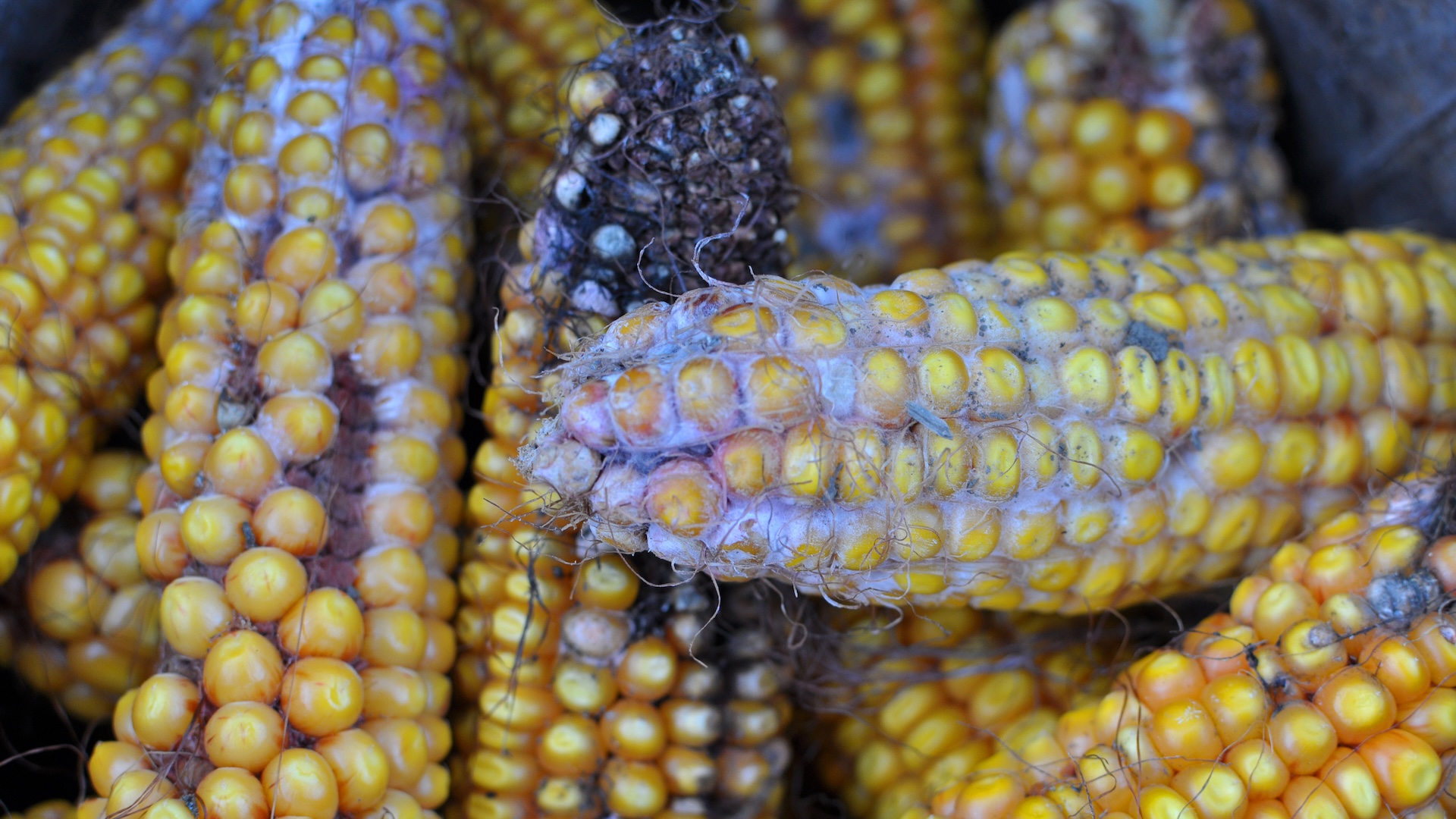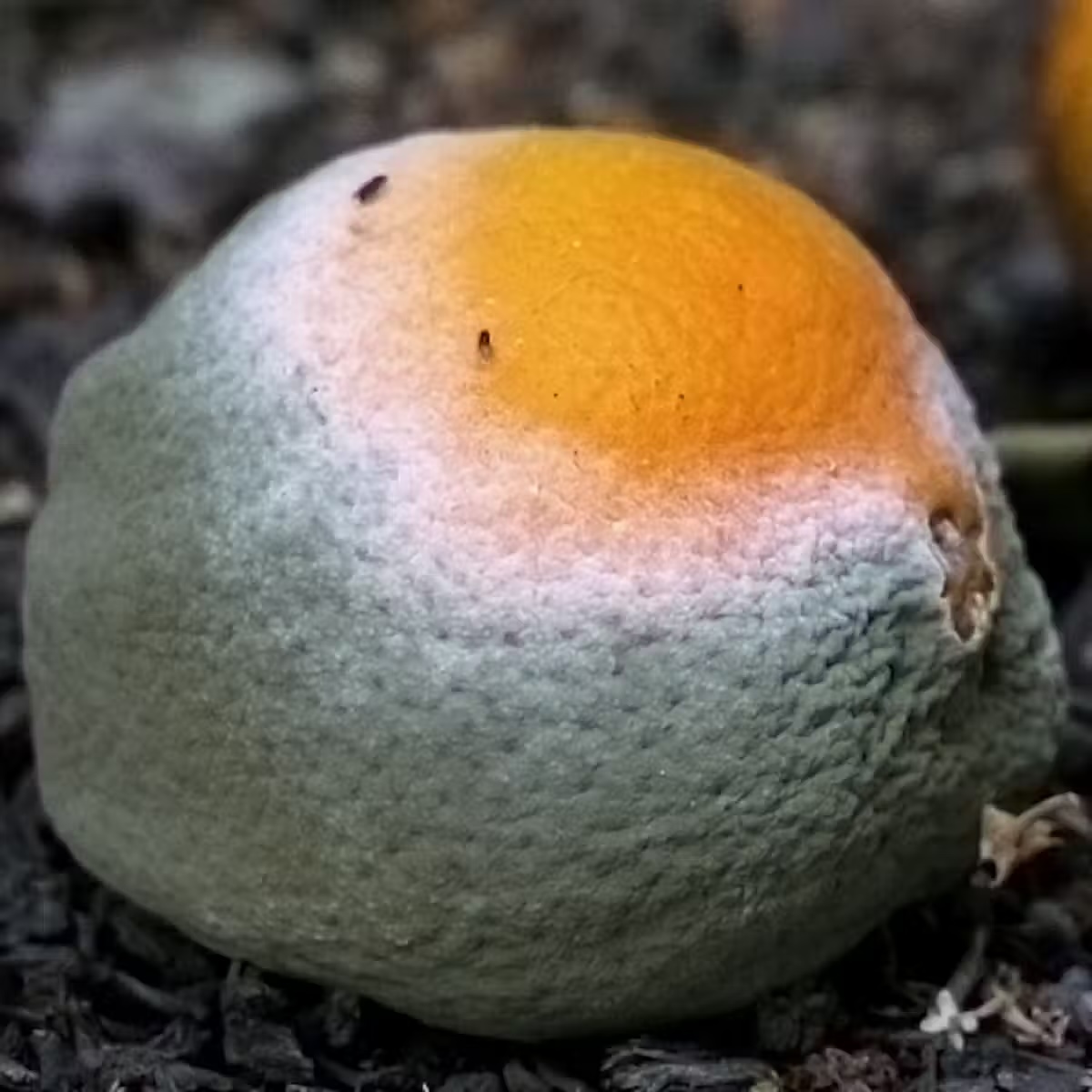When you open the refrigerator and find a wedge of cheese flecked with green mold, or a package of chicken that smells faintly sour, it can be tempting to gamble with your stomach rather than waste food.
But the line between harmless fermentation and dangerous spoilage is sharp. Consuming spoiled foods exposes the body to a range of microbial toxins and biochemical by-products, many of which can interfere with essential biological processes. The health effects can vary from mild gastrointestinal discomfort to severe conditions such as liver cancer.
Nuts and grains
In plant-based foods such as grains and nuts, fungi are the main culprits behind spoilage, forming fuzzy patches of mold in shades of green, yellow, black or white that usually give off a musty smell. Colorful though they may be, many of these molds produce toxic chemicals called mycotoxins.
Two common fungi found on grains and nuts such as corn, sorghum, rice and peanuts are Aspergillus flavus and A. parasiticus. They can produce mycotoxins known as aflatoxins, which form molecules called epoxides that can trigger mutations when they bind to DNA. Repeated exposure to aflatoxins can damage the liver and has been linked to liver cancer, especially for people who already have other risk factors for it, such as hepatitis B infection.

Fusarium is another group of fungal pathogens that can grow as mold on grains such as wheat, barley and corn, especially at high humidity. Infected grains may appear discolored or have a pinkish or reddish hue, and they might emit a musty odor. Fusarium fungi produce mycotoxins called trichothecenes, which can damage cells and irritate the digestive tract. They also make another toxin, fumonisin B1, which disrupts how cells build and maintain their outer membranes. Over time, these effects can harm the liver and kidneys.
If grains or nuts look moldy, discolored or shriveled, or if they have an unusual smell, it’s best to err on the side of caution and throw them out. Aflotoxins, especially, are known to be potent cancer-causing agents, so they have no safe level of exposure.
Fruits
Fruits can also harbor mycotoxins. When they become bruised or overripe, or are stored in damp conditions, mold can easily take hold and begin producing these harmful substances.
One biggie is a blue mold called Penicillium expansum, which is best known for infecting apples but also attacks pears, cherries, peaches and other fruit. This fungus produces patulin, a toxin that interferes with key enzymes in cells to hobble normal cell functions and generate unstable molecules called reactive oxygen species that can harm DNA, proteins and fats. In large amounts, patulin can injure major organs such as the kidneys, liver, digestive tract and immune system.
P. expansum’s blue and green cousins, Penicillium italicum and Penicillium digitatum, are frequent flyers on oranges, lemons and other citrus fruits. It’s not clear whether they produce dangerous toxins, but they taste awful.

It is tempting to just cut off the moldy parts of a fruit and eat the rest. However, molds can send out microscopic, rootlike structures called hyphae that penetrate deeply into food, potentially releasing toxins even in seemingly unaffected bits. Especially for soft fruits, where hyphae can grow more easily, it’s safest to toss moldy specimens. Do it at your own risk, but for hard fruits I do sometimes just cut off the moldy bits.
Cheese
Cheese showcases the benefits of controlled microbial growth. In fact, mold is a crucial component in many of the cheeses you know and love. Blue cheeses such as Roquefort and Stilton get their distinctive, tangy flavor from chemicals produced by a fungus called Penicillium roqueforti. And the soft, white rind on cheeses such as Brie or Camembert contributes to their flavor and texture.
On the other hand, unwanted molds look fuzzy or powdery and may take on unusual colors. Greenish-black or reddish molds, sometimes caused by Aspergillus species, can be toxic and should be discarded. Also, species such as Penicillium commune produce cyclopiazonic acid, a mycotoxin that disrupts calcium flow across cell membranes, potentially impairing muscle and nerve function. At high enough levels, it may cause tremors or other nervous system symptoms. Fortunately, such cases are rare, and spoiled dairy products usually give themselves away by their sharp, sour, rank odor.

As a general rule, discard soft cheeses such as ricotta, cream cheese and cottage cheese at the first sign of mold. Because these cheeses contain more moisture, the mold’s filaments can spread easily.
Hard cheeses, including cheddar, Parmesan and Swiss, are less porous. So cutting away at least one inch around the moldy spot is more of a safe bet — just take care not to touch the mold with your knife.
Meat
While molds are the primary concern for plant and dairy spoilage, bacteria are the main agents of meat decomposition. Telltale signs of meat spoilage include a slimy texture, discoloration that’s often greenish or brownish and a sour or putrid odor.
Some harmful bacteria do not produce noticeable changes in smell, appearance or texture, making it difficult to assess the safety of meat based on sensory cues alone. That stink, though, is caused by chemicals such as cadaverine and putrescine that are formed as meat decomposes, and they can cause nausea, vomiting and abdominal cramps, as well as headaches, flushing or drops in blood pressure.
Spoiled meats are rife with bacterial dangers. Escherichia coli, a common contaminant of beef, produces shiga toxin, which chokes off some cells’ ability to make proteins and can cause a dangerous kidney disease called hemolytic uremic syndrome. Poultry often carries the bacterium Campylobacter jejuni, which produces a toxin that invades gastrointestinal cells, often leading to diarrhea, abdominal cramps and fever. It can also provoke the body’s immune system to attack its own nerves, potentially sparking a rare condition called Guillain-Barré syndrome, which can lead to temporary paralysis.
Salmonella, found in eggs and undercooked chicken, is one of the most common types of food poisoning, causing diarrhea, nausea and abdominal cramps. It releases toxins into the lining of the small and large intestines that drive extensive inflammation. Clostridium perfringens also attacks the gut, but its toxins work by damaging cell membranes. And Clostridium botulinum, which can lurk in improperly stored or canned meats, produces botulinum toxin, one of the most potent biological poisons — lethal even in tiny amounts.
It is impossible for meat to be totally free of bacteria, but the longer it sits in your refrigerator — or worse, on your counter or in your grocery bag — the more those bacteria multiply. And you can’t cook the yuck away. Most bacteria die at meat-safe temperatures — between 145 and 165 degrees Fahrenheit (63-74 C) — but many bacterial toxins are heat stable and survive cooking.
This edited article is republished from The Conversation under a Creative Commons license. Read the original article.


